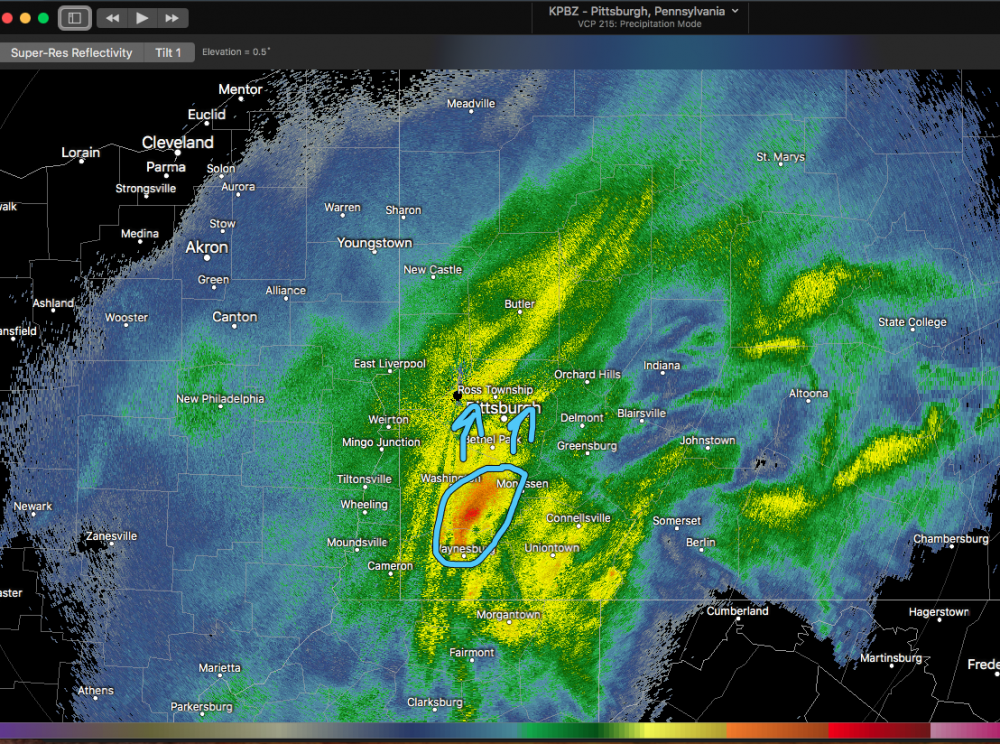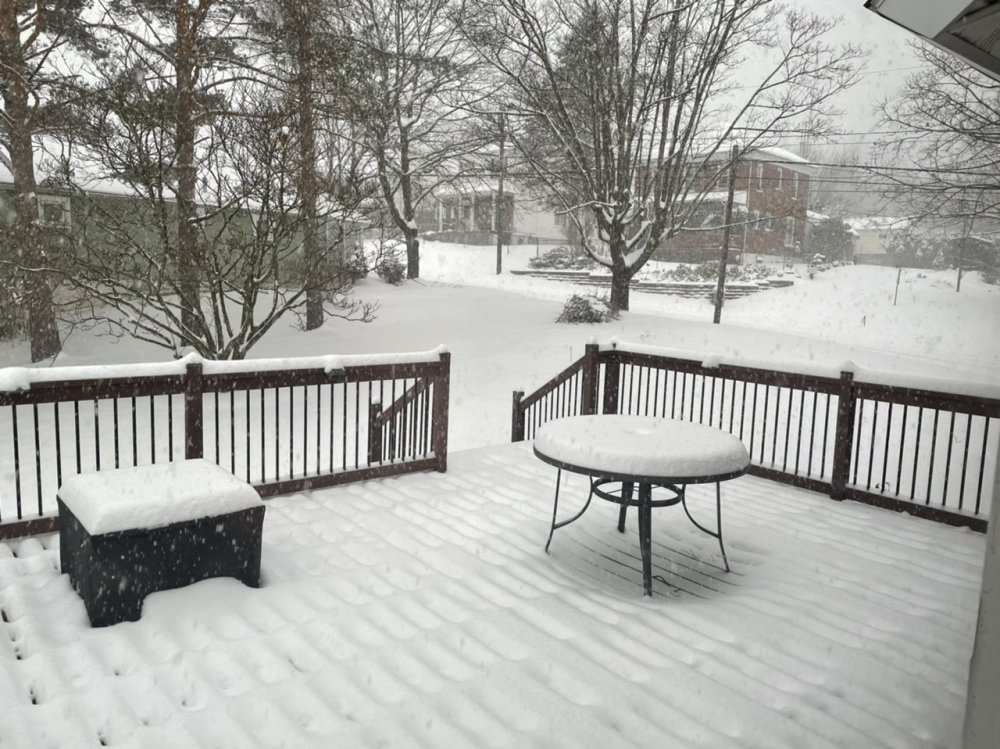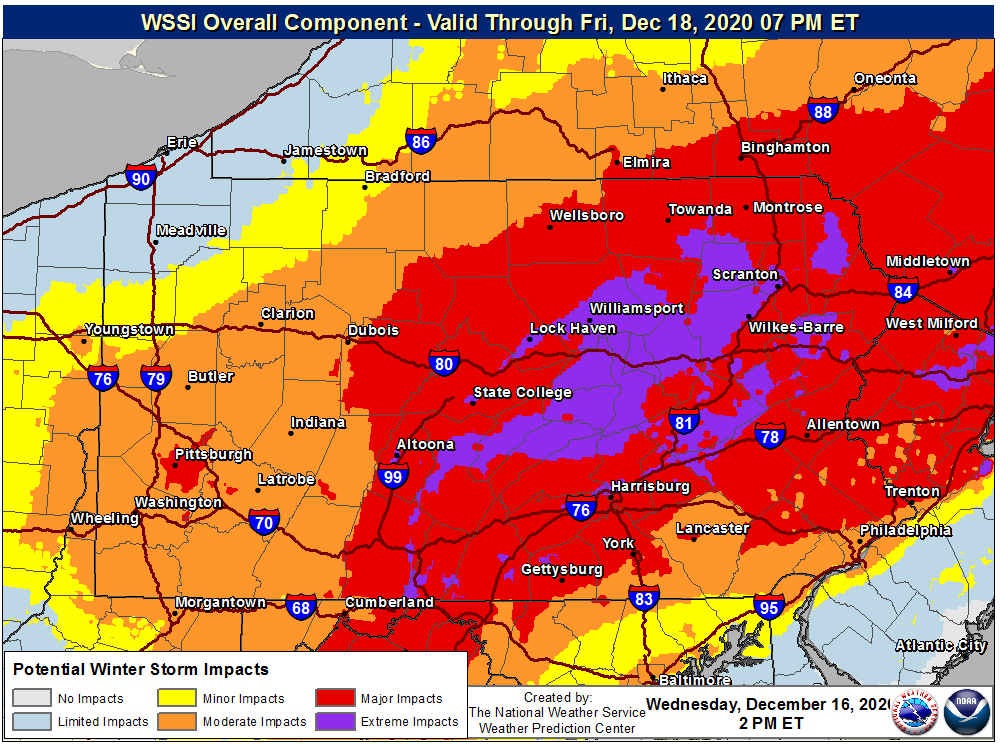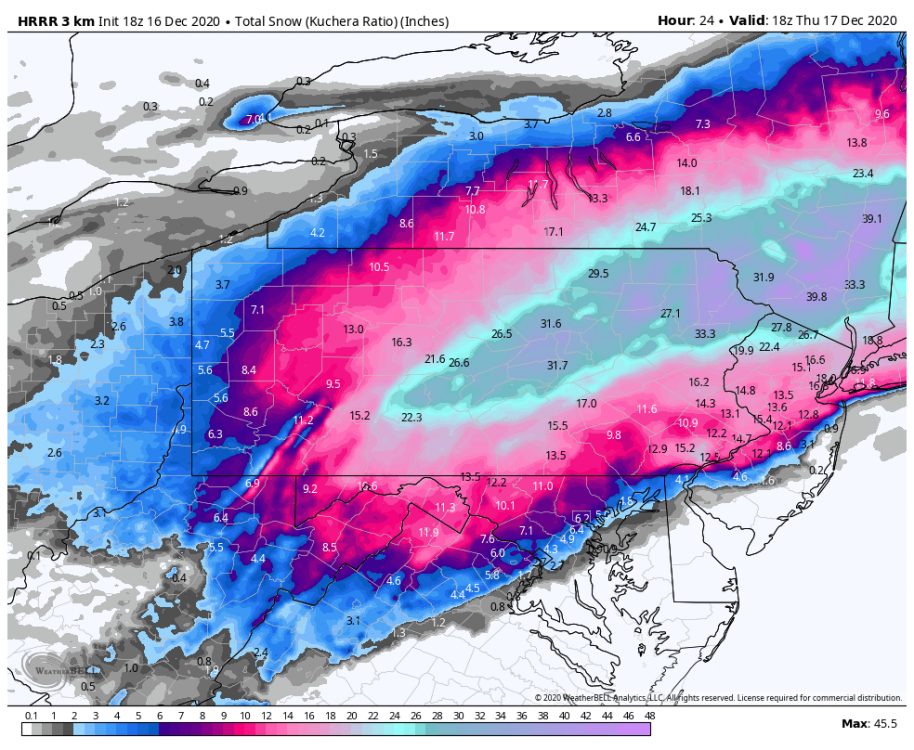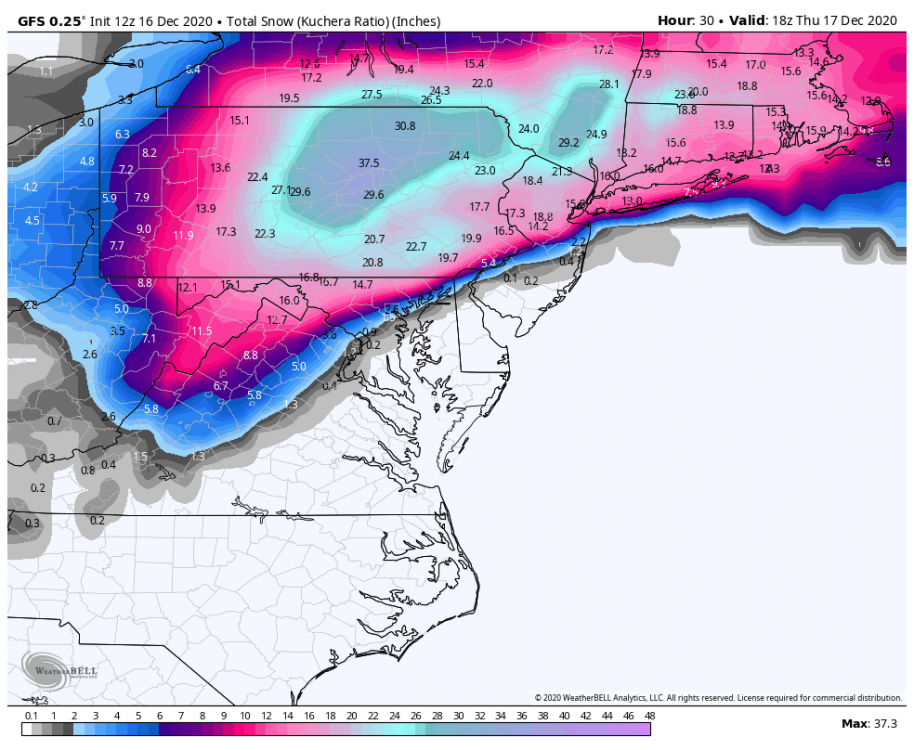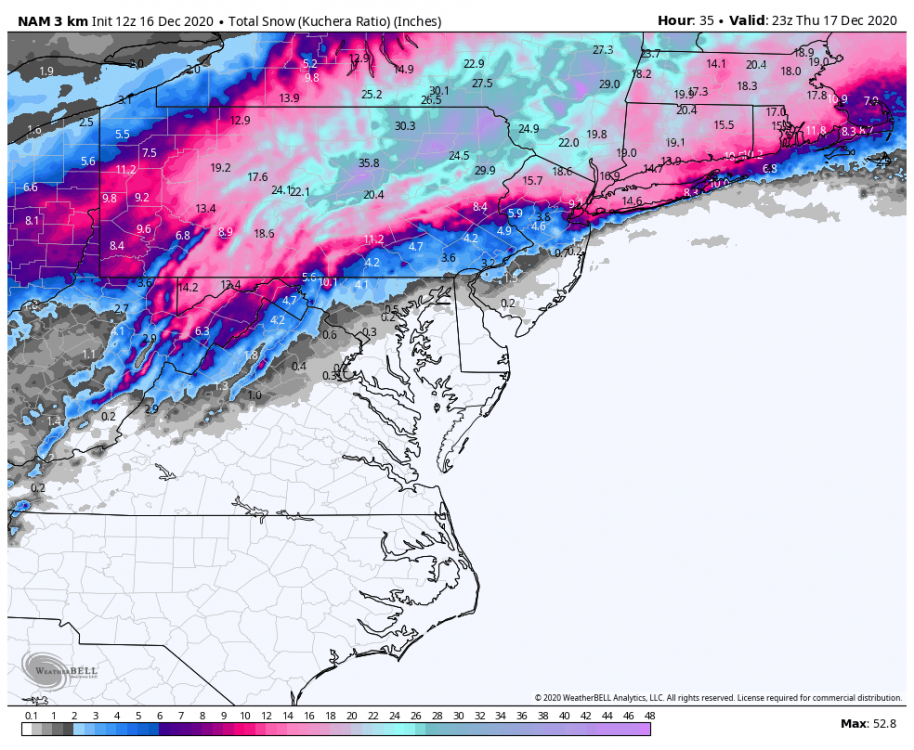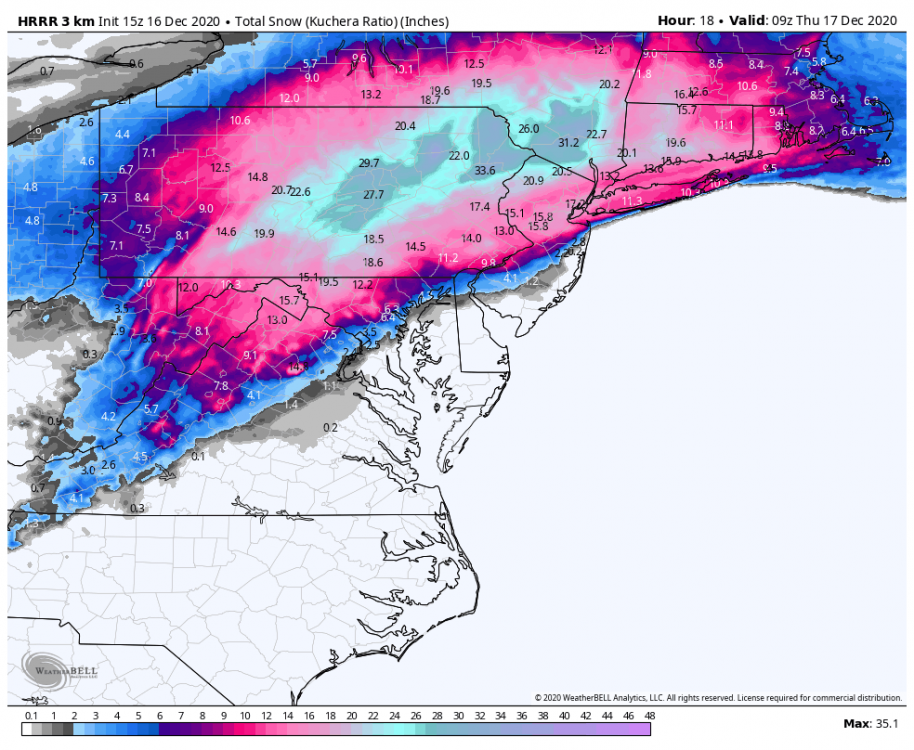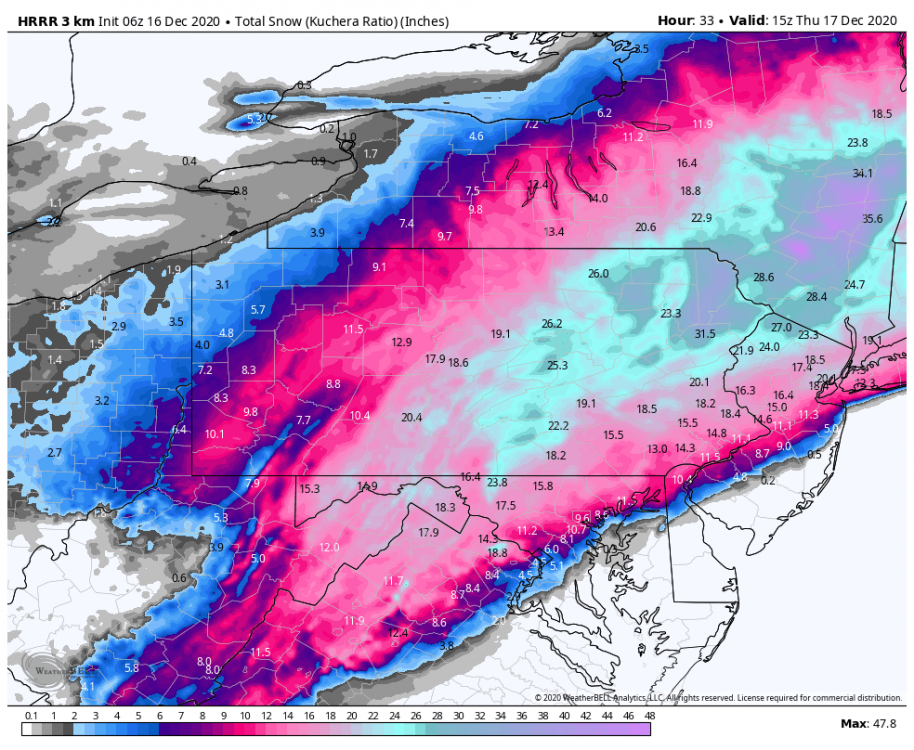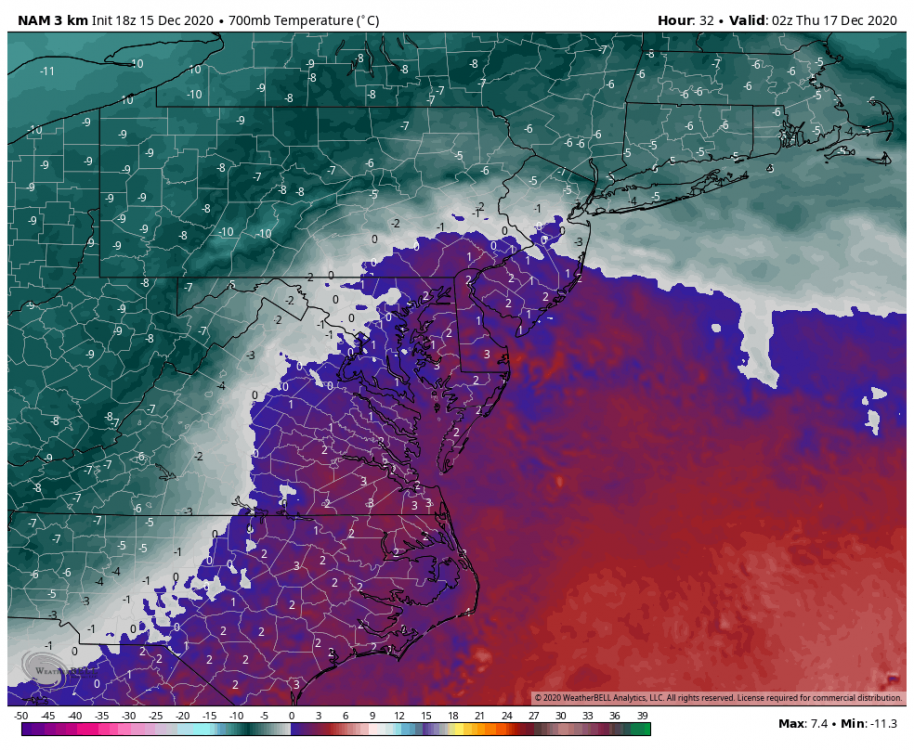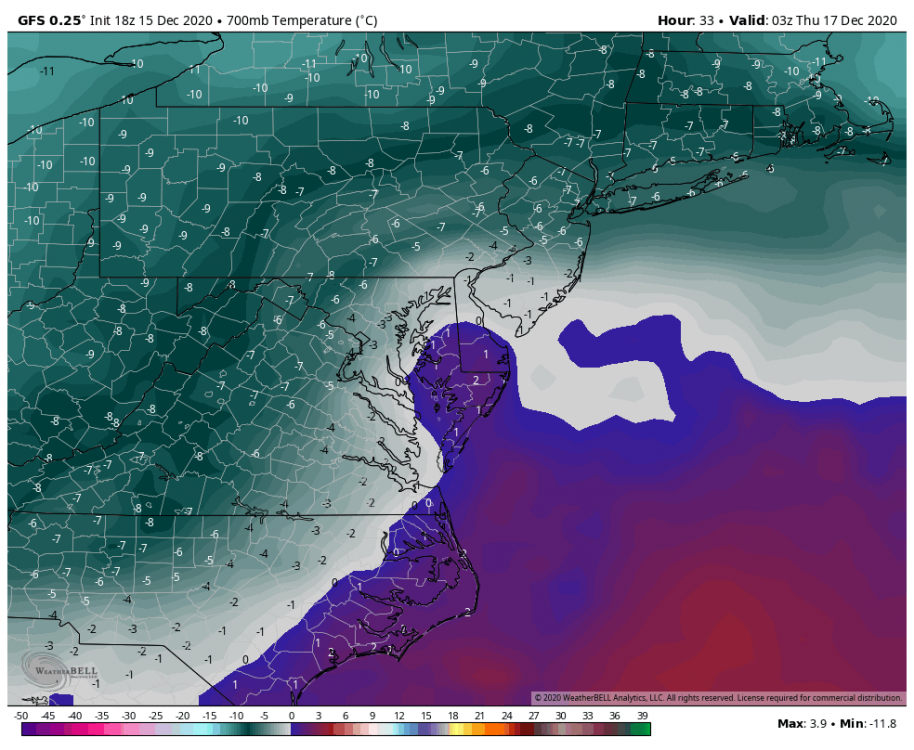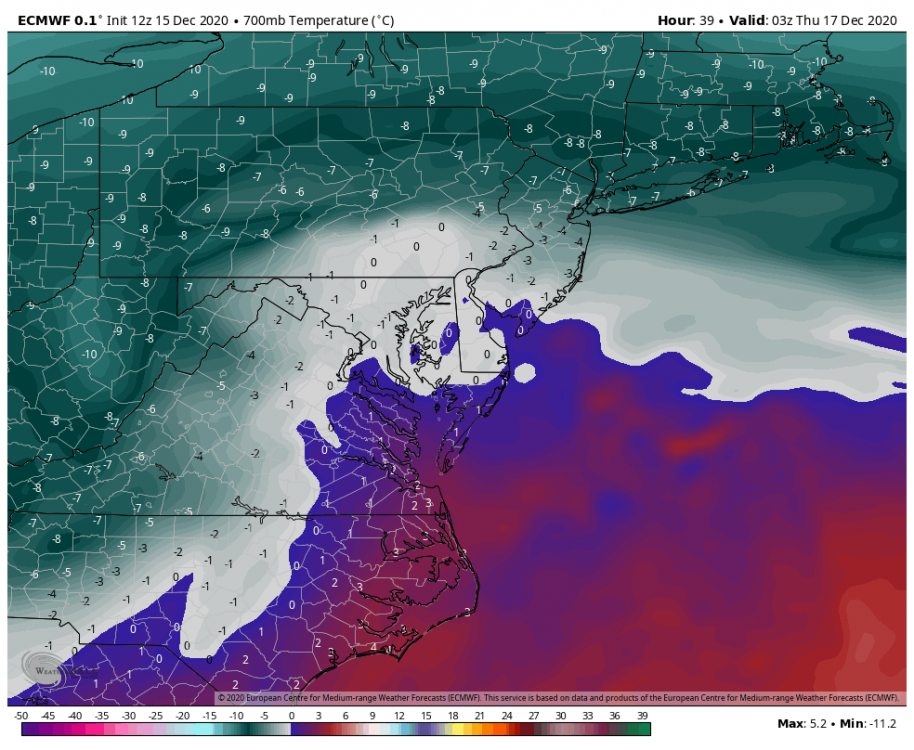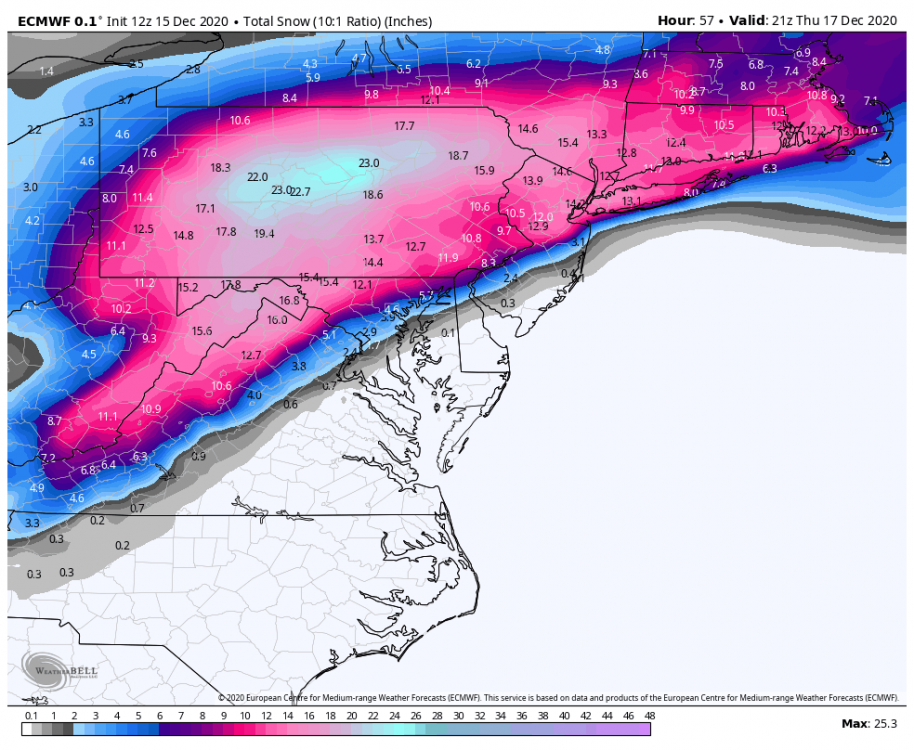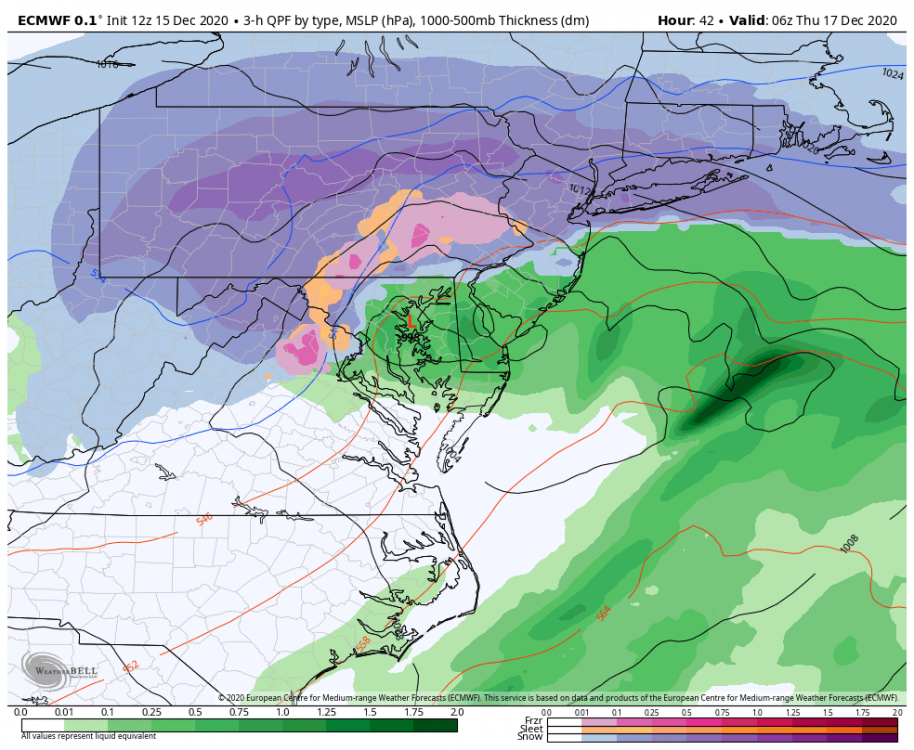
MAG5035
Meteorologist-
Posts
5,884 -
Joined
-
Last visited
Content Type
Profiles
Blogs
Forums
American Weather
Media Demo
Store
Gallery
Everything posted by MAG5035
-
December 16 2020 CTP Snowstorm Disco and Obs
MAG5035 replied to pasnownut's topic in Upstate New York/Pennsylvania
M6.2". Heavy snow with a pretty stiff breeze. 0.8" last hour -
December 16 2020 CTP Snowstorm Disco and Obs
MAG5035 replied to pasnownut's topic in Upstate New York/Pennsylvania
That stuff about to come up into town from the south looks nuts. Checked the CC product to make sure that wasn't a mix lol (50dbz!) -
December 16 2020 CTP Snowstorm Disco and Obs
MAG5035 replied to pasnownut's topic in Upstate New York/Pennsylvania
Yea we might have some lower rates or at least more varying rates during about the 6pm hour or so. The stuff building on Pittsburgh radar should pivot over and I think the real height of this thing could be roughly 0-3z (7-10pm) with the max rates of the storm. -
December 16 2020 CTP Snowstorm Disco and Obs
MAG5035 replied to pasnownut's topic in Upstate New York/Pennsylvania
Moderate to heavy snow continues. Breeze has kicked up a bit. M5.4" with 1.4" in the last hour. -
December 16 2020 CTP Snowstorm Disco and Obs
MAG5035 replied to pasnownut's topic in Upstate New York/Pennsylvania
-
December 16 2020 CTP Snowstorm Disco and Obs
MAG5035 replied to pasnownut's topic in Upstate New York/Pennsylvania
At 4.0". Rates really picked up within last 20-30min.. it's really going to start piling up. Very heavy snow and visibility under 1/8th. This stuff is straight powder snow too. -
December 16 2020 CTP Snowstorm Disco and Obs
MAG5035 replied to pasnownut's topic in Upstate New York/Pennsylvania
-
December 16 2020 CTP Snowstorm Disco and Obs
MAG5035 replied to pasnownut's topic in Upstate New York/Pennsylvania
Per CTP discussion, it had to have been close but apparently March '93 must not have went down as a 24"+ in IPT. This storm has a chance to break all of that. .CLIMATE... The last time there was 12+" of snow over a two day period (as many storms will cross from one date into another): State College: 6-7 Feb 2010 = 14.0" Harrisburg: 20-21 Mar 2018 = 14.2" Williamsport: 14-15 Mar 2017 = 18.4" Last time there was an 24+" storm (not sayin`, just sayin`): State College: 3-4 Mar 1994 = 27.7" Harrisburg: 22-23 Jan 2016 = 30.2" Williamsport: 12-13 Jan 1964 = 24.1" (the only two-foot storm for Williamsport) Highest two-day total: State College: 29-30 Mar 1942 = 30.5" Harrisburg: 22-23 Jan 2016 = 30.2" (that one, again) Williamsport: 12-13 Jan 1964 = 24.1" (that one, again) Higest two-day total in December: Harrisburg: 24-25 Dec 1961 = 13.9" Williamsport: 25-26 Dec 1969 = 17.2" Highest one-day total in December: Harrisburg: 23 Dec 1963 = 10.1" Williamsport: 26 Dec 1969 = 14.7" State College (7am-7am): 11 Dec 1992 = 12.5" -
December 16 2020 CTP Snowstorm Disco and Obs
MAG5035 replied to pasnownut's topic in Upstate New York/Pennsylvania
Definitely, the radar seems set up real nice right now. You may miss the most intense bands but I think you should get to at least 12" without too much drama. -
December 16 2020 CTP Snowstorm Disco and Obs
MAG5035 replied to pasnownut's topic in Upstate New York/Pennsylvania
2.9" with moderate-heavy snow. Visibility ~1/4mi. 1" in the last hour. That rate has been about the same since a bit before 1pm. -
December 16 2020 CTP Snowstorm Disco and Obs
MAG5035 replied to pasnownut's topic in Upstate New York/Pennsylvania
Wow on the 18z HRRR. And these Kuchera totals aren't doing anything mind blowing ratio wise. Did some calculating and KAOO and UNV get to their ~2ft amounts via 14-15:1 ratios. Selinsgrove (SEG) and IPT get to their nearly 32" totals via a 13-14:1 average. This is doable if the QPF ends up that high in the deform bands. -
December 16 2020 CTP Snowstorm Disco and Obs
MAG5035 replied to pasnownut's topic in Upstate New York/Pennsylvania
Passing the 1" mark here, moderate rates and 26ºF. -
December 16 2020 CTP Snowstorm Disco and Obs
MAG5035 replied to pasnownut's topic in Upstate New York/Pennsylvania
Looks like the more steady stuff has arrived here by looks of the radar. Moderate rate currently. -
December 16 2020 CTP Snowstorm Disco and Obs
MAG5035 replied to pasnownut's topic in Upstate New York/Pennsylvania
Wow, this might have been the snowiest GFS run of them all right at game time. Both that and the 3k NAM have 3' at IPT (via Kuchera). Huge difference in the York/LNS realm though. That's going to be something to watch today which model wins with the thermals. Heck the 3k NAM got sleet all the way to KAOO on a huge surge of >0ºC 850mb temps, that's probably not going to happen. York and Lancaster probably aren't quite going to get to 20+ either as there should be some mixing. Given already solid establishment of cold air at 925mb and below via the Canadian high, I still feel most mixing is going to be in the form of sleet north of the mason-dixon. Here's the latest HRRR, which probably represents accums in the LSV a bit better currently with limited erosion of the accumulations in far southern York and Lancaster . Still snowing at 18hr in pretty much the whole eastern half of PA. -
December 16 2020 CTP Snowstorm Disco and Obs
MAG5035 replied to pasnownut's topic in Upstate New York/Pennsylvania
Already a nice burst of moderate-heavy snow with this first band, accumulating on all surfaces. -
December 16 2020 CTP Snowstorm Disco and Obs
MAG5035 replied to pasnownut's topic in Upstate New York/Pennsylvania
Light snow has just gotten started here, a bit ahead of schedule. -
Your welcome, and actually CTP has just updated their disco. They got all the good details in there haha. Also, they have a climo section for record snowfall.. which this is poised to break 2 day largest snowfalls for December in all the CTP climo stations (UNV, IPT, MDT).
-
That portion of the disco hasn't been updated since about 10 last night. However, overnight and early morning guidance (6z) have continued to support that notion of a 24+ axis somewhere between I-99 and I-81 northeastward toward the Poconos. Exactly where is likely going to eventually be determined by today's near term guidance as the event unfolds. Still trying to adjust to the fact that we're trying to pinpoint the highest totals within a nearly region wide foot plus in all guidance for us haha. I think CTP has a good handle with their current snow map. I do like that general area of Lewistown to Selinsgrove up to Williamsport for the best opportunity to get to two feet or perhaps beyond. For State College I'm thinking 14-18", but definitely a shot to get past 20 or so. Gonna depend how far back those CSI bands set up the first half of this evening, and to a lesser degree how well the storm accumulates rate and ratio wise during the WAA phase of precip today. If State College does get into the thick of it, I'd look at the 7 mountains region of US 322 between there and Lewistown for something ridiculous. Again, this is pinpointing where these excessive totals might pop up within the general 10-20" this whole region stands to see. Making a fairly safe call of 14-16" for the backyard (Altoona), it's weird saying that much is a "safe" call haha. They're sort of in the same boat as State College with perhaps the outside chance of seeing 20.
-
Way too early look at the 6z HRRR which extends out on the 0,6,12,and 18z runs seems to jive okay with things. For some obs here, it's a nice crisp 26ºF currently with some increasing clouds and a light easterly breeze.
-
How do you feel about good ole Williamsport being a snow chasing destination for this storm? Haha
-
Unless your already booked up in Williamsport, since your leaving early in the morning I'd have a good look at 0z and 6z guidance to make sure the swath of excessive snowfall is still going through there directly. A couple backup options might be State College, somewhere up US 15 between Harrisburg and Willamsport (Selinsgrove-ish) or Lewistown on the US 322 corridor that goes between Harrisburg and State College... although I think any of those options are looking pretty good at the moment haha. All those places have pretty good roads so I would imagine they'll be reasonable by Thursday evening since this is supposed to end by daybreak Thur. If they aren't, well then you probably picked the right place for your snow chase haha. CTP mentioned about CSI banding in their discussion, that's the kind of setup you could easily get thundersnow or certainly very intense snow rates out of. And lastly, I'm still on the fence with these Jan 2016-esque totals that persist on model guidance. Within what looks like pretty much an area wide 10-20", I certainly think at least a thinner stripe of 2'+ is possible anywhere between I-99/220 and I-81 depending on where these intense bands set up. These bands are likely to have better temps aloft in the snow growth layer to boost snow ratios being located in the central part of the state. A 30" is doable, but that would be one heck of an experience to get there since this looks like about a 15-16hr storm.
-
I honestly don't see much change from 12z to 18z or really anything major from model to model at 18z in terms of the surface track when comparing stuff. I'm not going to chase every random kink or secondary max in the isobars. Everyone's going to get a significant snowstorm. Where the best 700mb forcing resides is going to be where the top end snow totals are going to be found and the amount of warm advection aloft is going to determine what kind of mixing issues occur in the LSV, specifically below the turnpike. Model's aren't quite honed in on either yet, especially the mixing. The 18z GFS basically tracked the surface low pretty much the same the 12z as did the 12 vs 18z NAM. Now NAM has looked a bit southeast of the GFS but the NAM sends a lot of sleet (3k had 1-2"+ worth) into the LSV and the GFS basically has the surface low running a straight rain/snow line. The culprit for all of this is not at 850mb but at the 700mb level. There's a huge difference between the NAM and GFS on temps at that level. NAM GFS There was a compromise to be in had in the form of the earlier 12z Euro which is tracking similar to the GFS on the surface. That was borderline at 700mb but generally stayed below freezing at that level and at 850mb where it showed mix.. like indicating a briefer intrusion of the warm nose somewhere in between those levels (probably a more reasonable assumption.
-
High water mark of the mixing at this 42 hr frame. Mixing at 39 and 42 above mason-dixon. Everyone back over at hr 45. It's hard on these 3 hr maps to really tell whats going on QPF wise but it appears to me the mixing period might conincide with a slot (or lighter precip at least) working up into the LSV, which is certainly possible with how close the low gets before fading. Euros only putting out small sleet/ice numbers and then the backside sets back again as snow. It's still going to be a significant snowfall regardless. Hr 42 10:1 map
-
Yup I think it would be. 96 and 03 came the closest with 18"ish. Nov '95 was also a 15-18" type snowstorm in UNV. It would be the first one for me personally from an IMBY perspective since '94, which I was 6-8 years old in 92-94 so I don't really remember that golden age for big snowstorms in this corridor. Jan '96, Feb 03, and Feb '10 were all high teens storms (still great events though of course). Just missed the 20"+ by about 15-20 miles in 2016. Hard to do around here, I'll believe it when my homemade snowboard that tops out at 20" disappears tomorrow night lol.
-
With model's seemingly starting to zero on taking the surface low essentially to the Chesapeake Bay Bridge (the Baltimore one), it's pretty likely at least the southern parts of York/Lancaster have a period mid storm where they mix. I think it'd be mainly sleet north of the mason-dixon line but a low track that close is probably going to introduce p-type issues there for a couple hours. Once the low starts to make it's fade heading toward going under Long Island and New England I think anyone mixing in PA will promptly go back to snow.

